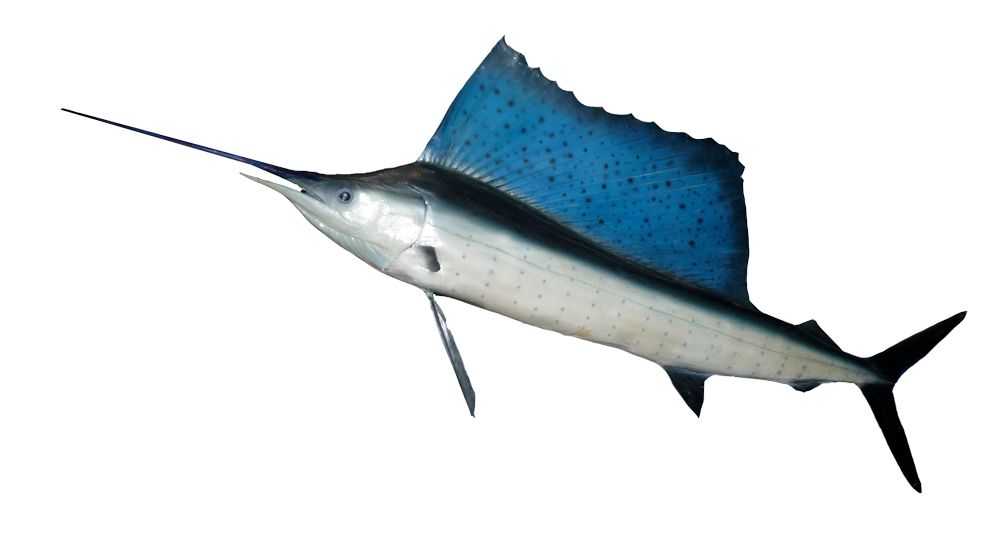Indo-Pacific Sailfish

Species Details
Istiophorus Platypterus
Istiophoridae
Perciformes
Offshore
120 - 220 lbs.
42" - 137"
Indo-Pacific Sailfish (Istiophorus platypterus) Fish Description
The Indo-Pacific Sailfish is known as well under many names, such as the Pacific sailfish, Atlantic sailfish, billfish, ocean guard, and ocean gar. And from its name, it is a native sailfish from the Indian and Pacific oceans, and as well as the Atlantic naturalized from migration through the Mediterranean Sea.
The Indo-Pacific sailfish’s body is dark blue on top, brown-blue laterally, with a silver to white underside. They have elongated upper jaws in the shape of a spear. This large, sharp bill-like mouth is used for hunting.
Their first dorsal fin is in a similar to a sail and is quite broad with many black cones and its top is squared off. They have very narrow pelvic fins, located near their anus. They are covered all around their body with embedded blunt scales. Their lateral line is curved just above their pectoral fin, straight to the base of their tail.
Diet and Size
Indo-Pacific sailfish species’ diet most commonly includes small fish, squid, and other varying preys, such as anchovies, herrings, mackerel, tuna, and more.
Indo-Pacific Sailfish can grow up to 5.7 to 11 ft., and averagely weighs around 120 to 220 lbs. The lifespan of the Indo-Pacific sailfish is at a maximum of 13 to 15 years, but their average as a specimen of a catch and release is around 4 to 5 years.
Interesting Fact about Indo-Pacific Sailfish
The Indo-Pacific Sailfish is a highly sought after game fish by anglers for the sailfish’s dominating features and personality.
Fishing Techniques
The most well-known locations in fishing for the Indo-Pacific Sailfish include the waters of Bermuda, Puerto Rico, the Gulf of Mexico, and the Windward Islands.
The Indo-Pacific sailfish are often caught as bycatch from commercial tuna longliners. However, they are caught with drift nets, harpoons, and trolling.
When trolling for the Indo-Pacific sailfish, a whole mullet or ballyhoo is used for bait to lure them in.
Once you can hook one of these strong, powerful fish, expect them to put up a long, vigorous fight as they’ll continue to leap and dive. These aerodynamic creatures can sometimes take hours to land.
Habitat and Distribution
Indo-Pacific sailfish are most commonly observed in the tropical and sub-tropical Atlantic and Indo-Pacific oceans, widespread and ranging into temperate waters.
Indo-Pacific sailfish are epipelagic, living their entire lives in the open ocean. They spend the majority of their adult life by the mixed layers near the surface and the thermocline. Occasionally, the Indo-Pacific sailfish would dive into deeper waters with low temperatures, reaching as low as -8°C. But predominantly they can be found at their preferred water temperatures ranging between 25° to 30°C.
They annually migrate going to higher latitudes during summer and towards the equator in autumn. Larger adult Indo-Pacific sailfish tend to live in the easternmost regions of the Atlantic and Pacific oceans.







